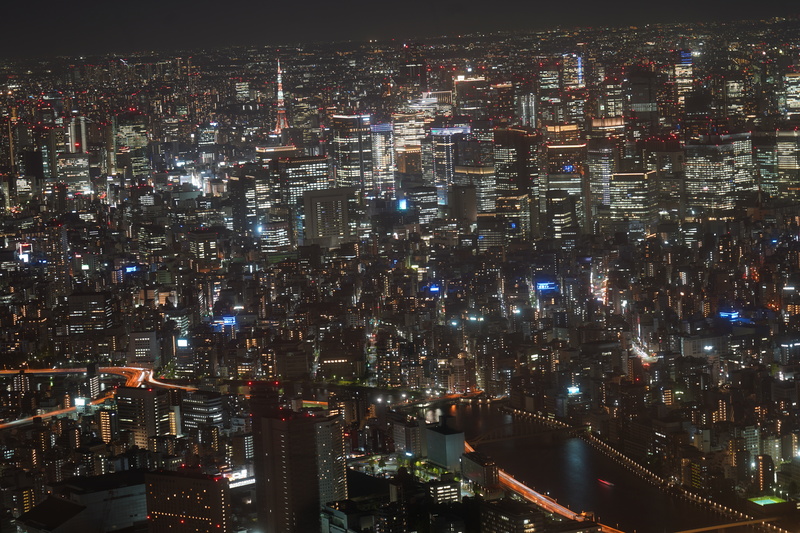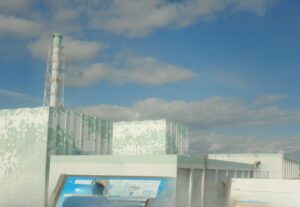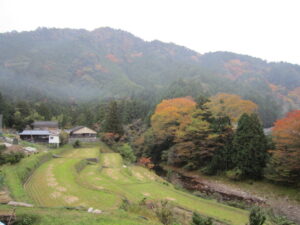Nagasaki Prefecture is a prefecture located in the Kyushu region in the southwest of Japan. The prefecture with the most islands among the 47 prefectures. Nagasaki Prefecture has a complex history such as Persecution of Christians during Edo period, built the artificial island ‘Dejima’ for trading merchant of Portuguese, Dutchess trading merchant for trade during Edo period, built the artificial island ‘Gunkanjima’ for coal mining and attack by atomic bombing in the end of WW2 that is unique in many ways.
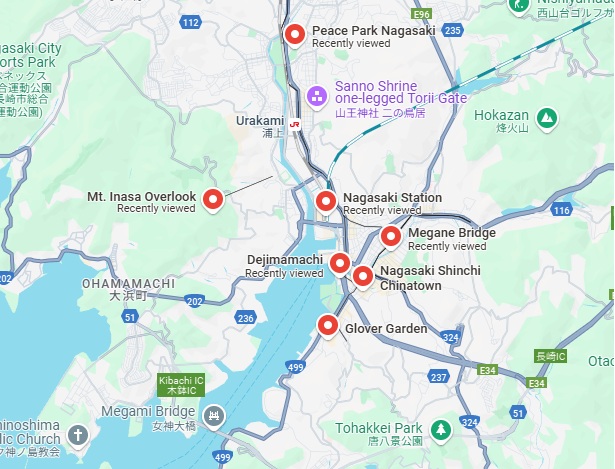
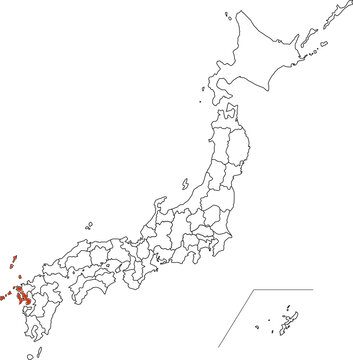
Major tourist’s attractions in Nagasaki city Nagasaki prefecture is coloured in red
Gunkanjima(Hashima)
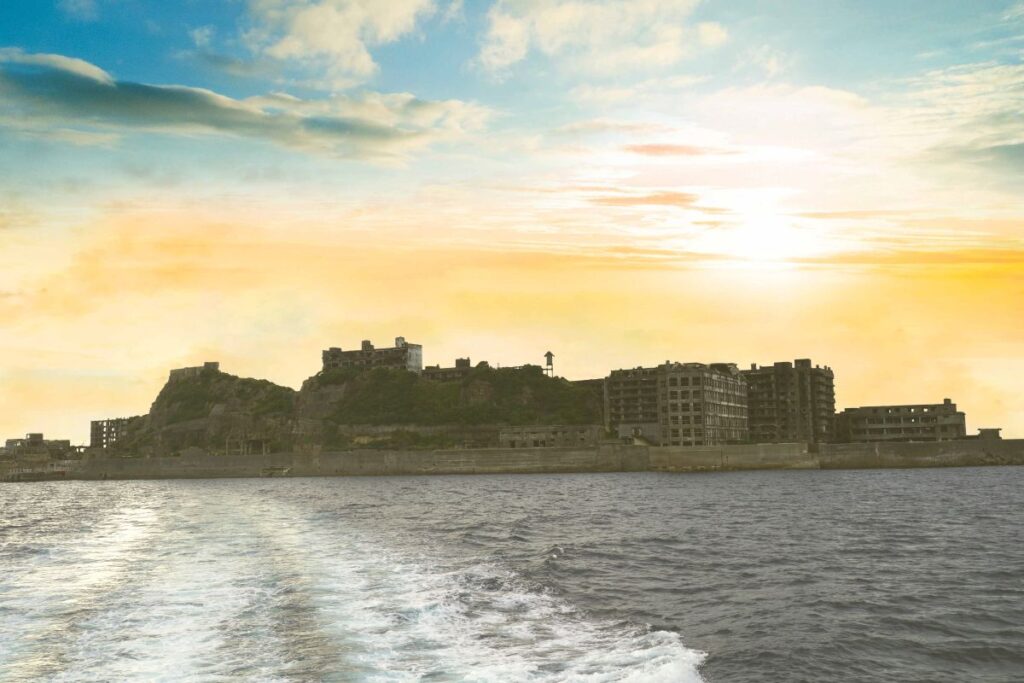
The World Heritage Site Gunkanjima, a real name is Hahima, located about 18 kilometers off the southwest coast of Nagasaki Port, got its name because it resembled the battleship Tosa when viewed from a distance. It thrived by the underwater coal mines between Meiji era ( 1868- ) and Showa era ( – 1970’s ). In 1960’s, Japan’s first reinforced concrete high-rise apartment building was built, 5,500 people lived in the area only with 0.06 square kilometers. it had a population density greater than that of Tokyo. But the transition of primary energy from coal to oil let decline it in 1970s, closed in 1974 after all residents left. Now tourists can visit Gunkanjima by organized boat tours. We joined Gunkanjima Cruise. ( 3500 yen / adult, 120 minutes, 10 minutes walk from JR Nagasaki train station ) English application is available for non-Japanese speakers but guides speak only Japanese during the tour at this moment as of 2024 October.
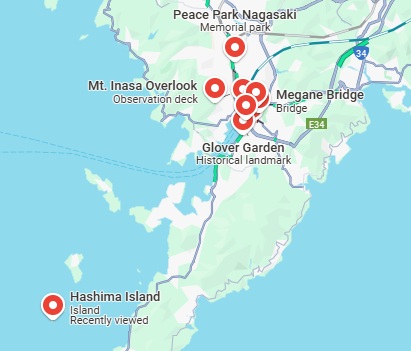
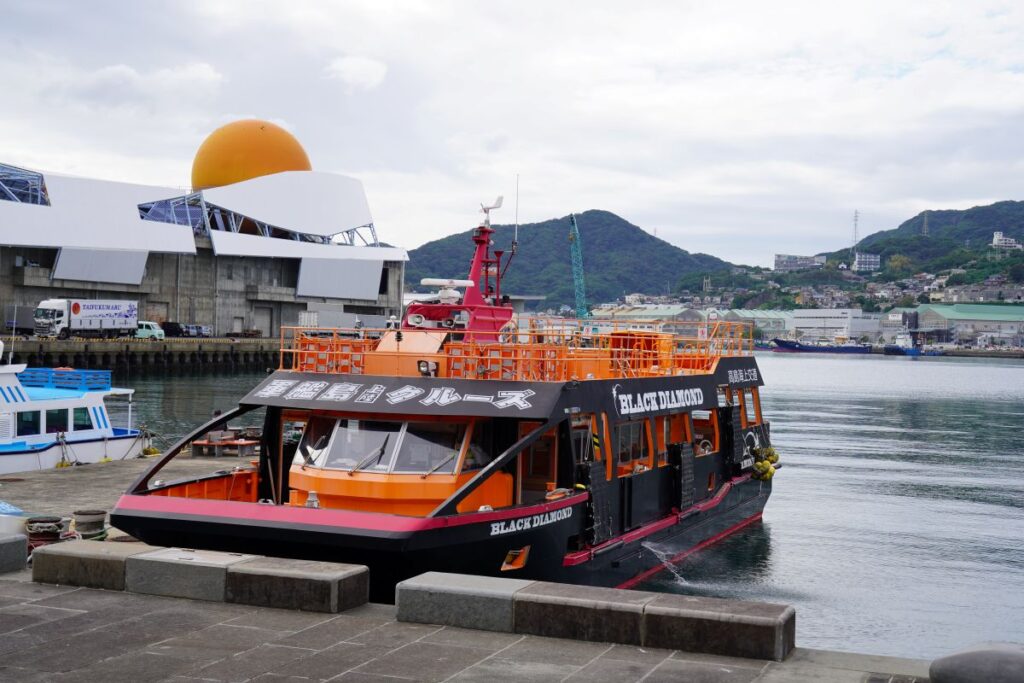
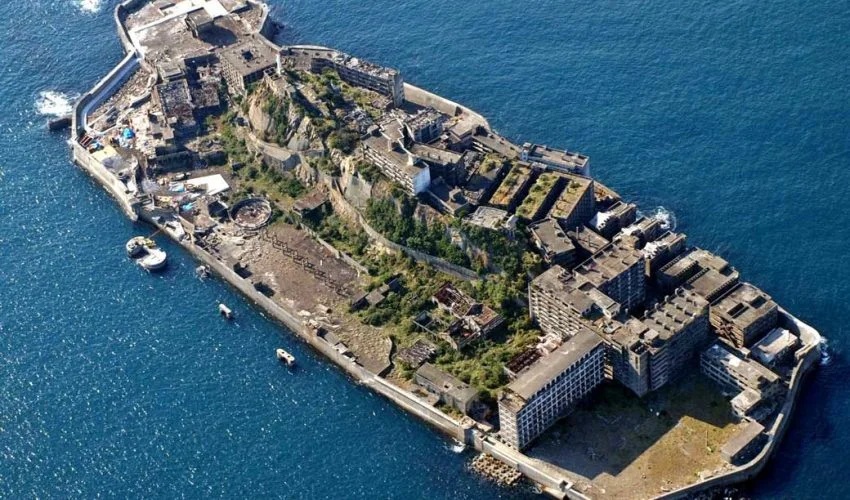

In the tour, 40 minutes after boarding, firstly we dropped at Takashima (1.34 square kilometers) where also thrived in the coal mining industry. The rest rooms can be found only here in the entire tour course. In the tour, we were taken to the coal mining museum of Gunkanjima. However, Thomas Blake Glover (1838-1911) had his cottage further to central Nagasaki city. He managed Takashima coal mine by Japanese government’s ( Meiji Government ) assignment after his trading company went bankrupt. The coal mine was closed in 1986 though, approximately 380 people are still living in the small island.
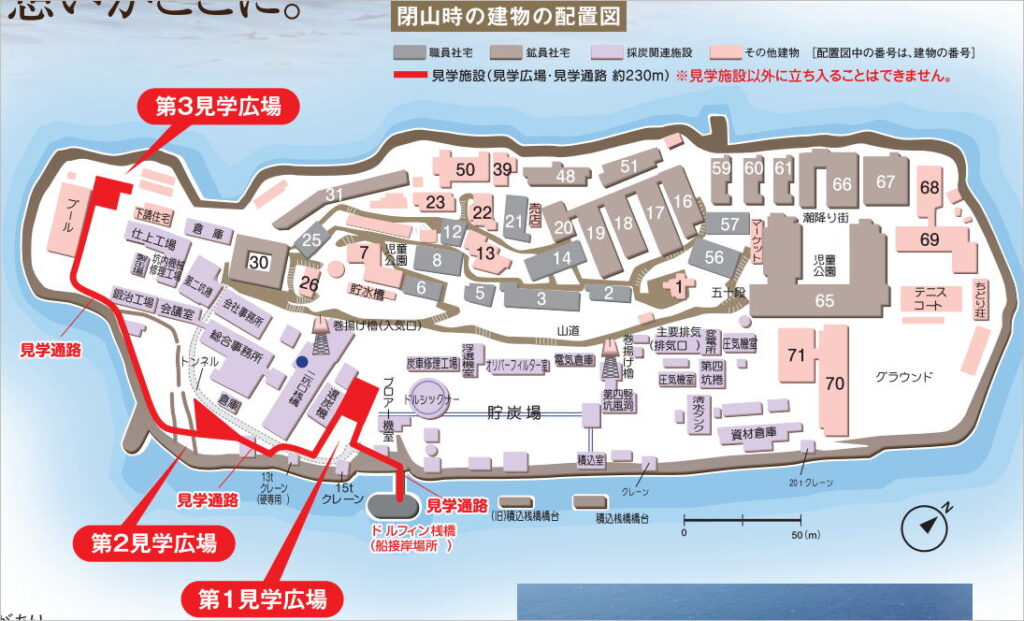
After 10 minutes boarding, the boat went around Gunkanjima, then, we had a chance to land on Gunkanjima as the weather condition was good. If it is windy, the waves are high, it is impossible for the ship to dock, so landing on the island is not possible. However, areas that can be accessed are only colored in red in the above map due to safety and security.

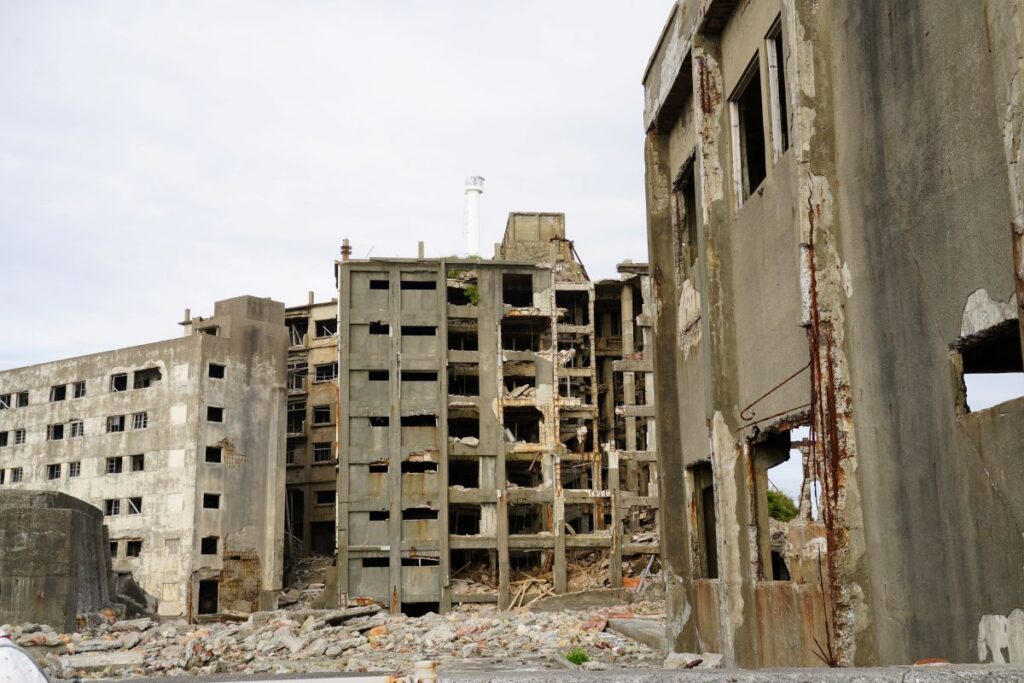
The left photo – school ruins, the right photo – a factory and apartments for subcontracts
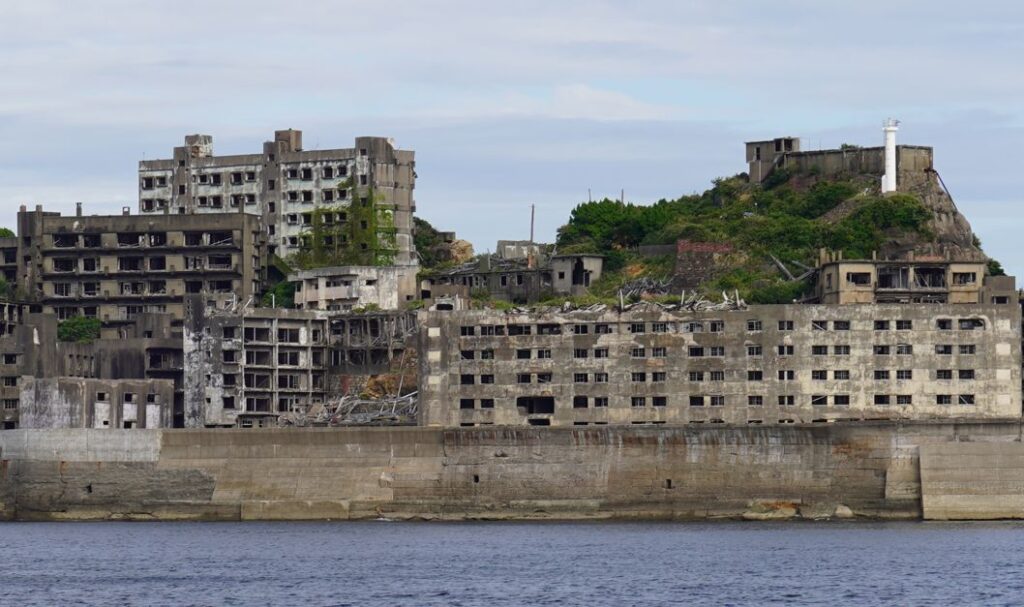

The above photos show company housing. The light house on the left photo was built after Gunkanjima was closed to avoid it becoming an obstacle to navigation. Hashima Shrine is on the right photo. Yearly festival took place every spring until Gunkanjima’s closure.
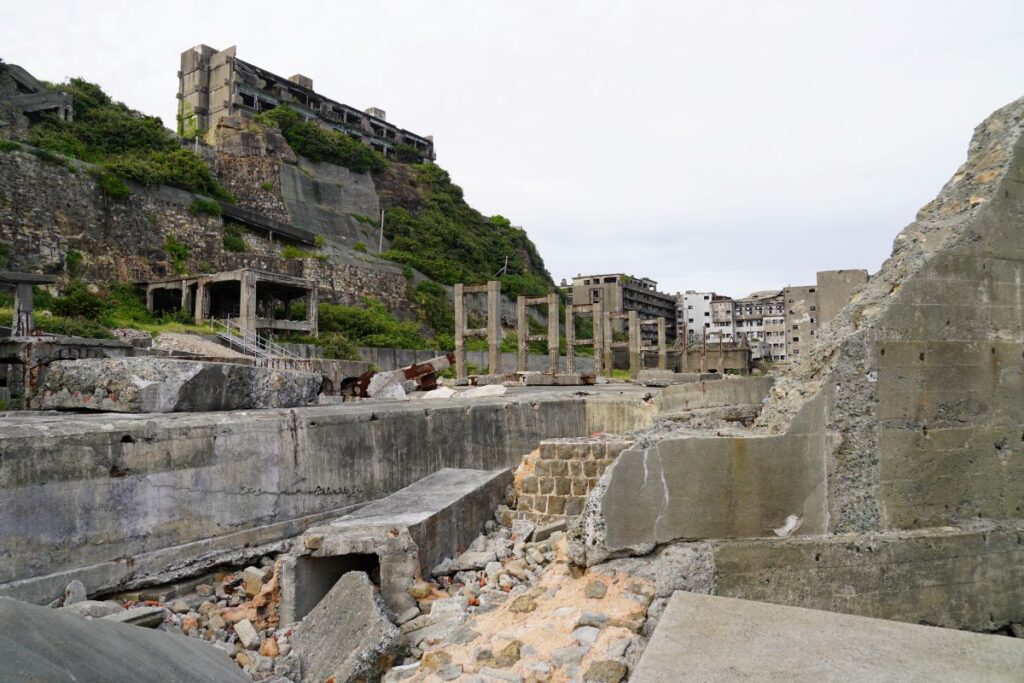
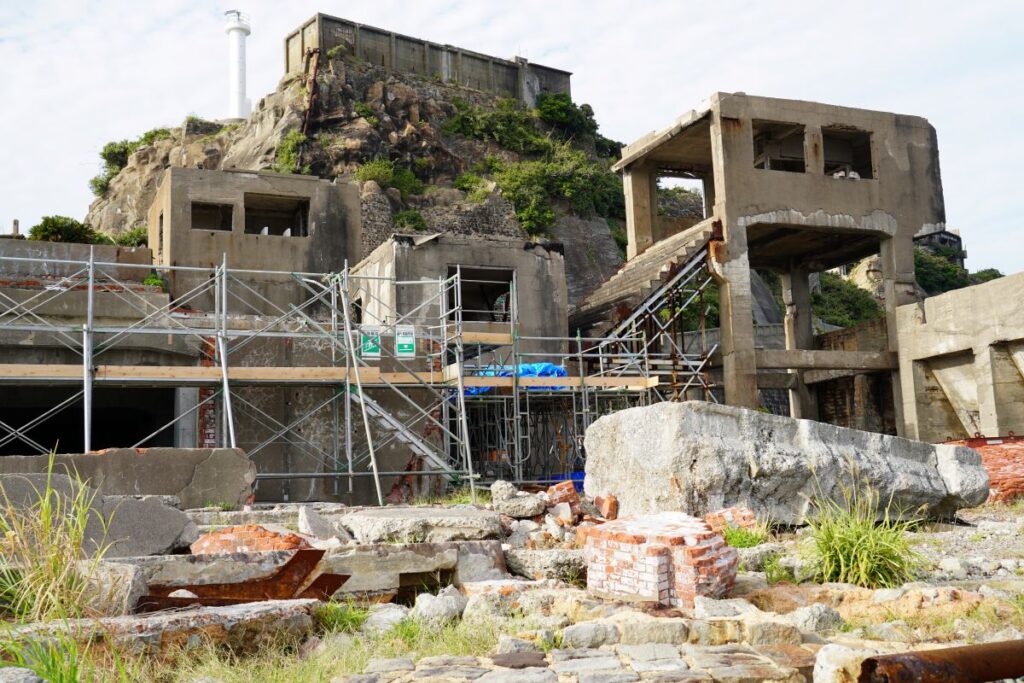
On the right side of the above photo, there are the second shaft entrance platform and “Stairs of Life”. The stairs leading to the second shaft entrance platform. The mine is very hot, dangerous and can be deadly, mining work is very hard. In fact, many coal miners died in the mine. Whenever miners walked here, they felt the value of life, hence it is called the “Stairs of Life.”
As those photos show, many buildings are breaking down. As a World Heritage site, the challenge now is how to maintain these.
Nagasaki Peace Park
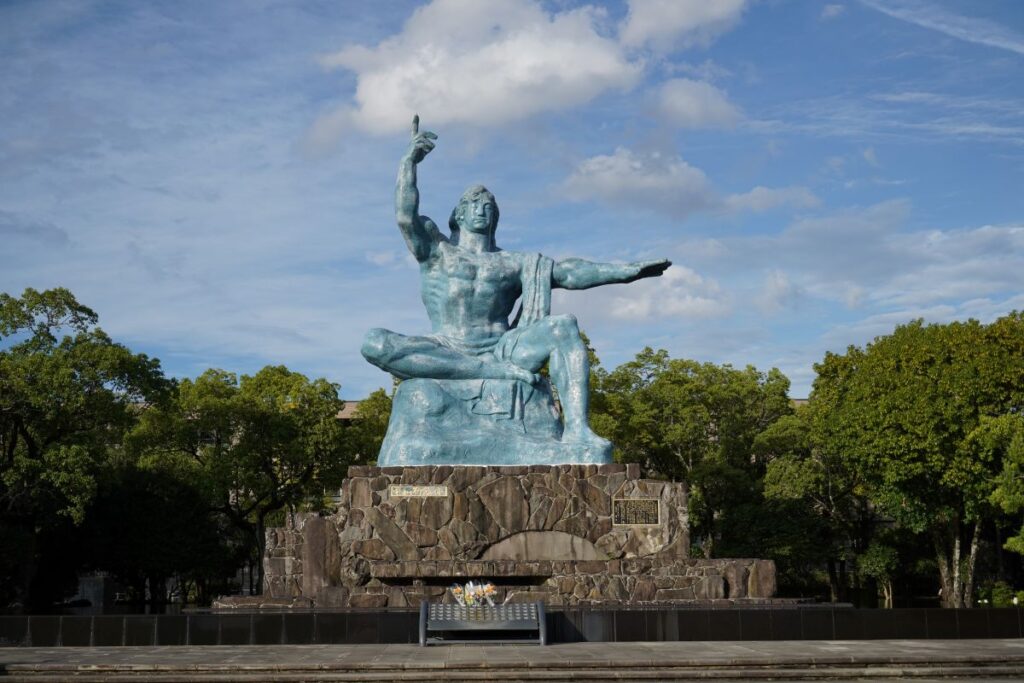
Nagasaki is the second city in the world to have an atomic bomb dropped on it on August 9th, after Hiroshima on August 6th in 1945. 88% of people in 1km of atomic bomb drop point were killed, approximately 74,000 people. Nagasaki Peace Park was created with the wish for world peace near Atomic Bomb Dome in 1950. The park has 3 zones, Wish Zone, Prayer Zone and Zone of Learning. It takes 3 minutes on foot from Heiwa Koen (Peace Park) station from JR Nagasaki station by tram ( No.1 / 3 )
Wish Zone
The sculptor Seibo Kitamura who was born in Nagasaki completed the bronze Nagasaki Peace Statue in 1955, ten years after the atomic bombing. The raised arm points to the threat of nuclear weapons and the out-stretched arm symbolizes peace.
The below is Peace Fountain. It inspires the feathers of the dove and crane, symbols of peace. There is a monument engraved a message of a girl who was affected by the atomic bomb ‘I was unbearably thirsty. There was something like oil floating on the surface of the water. Desperately wanting water, I finally drank it even with the oil floating on top.’
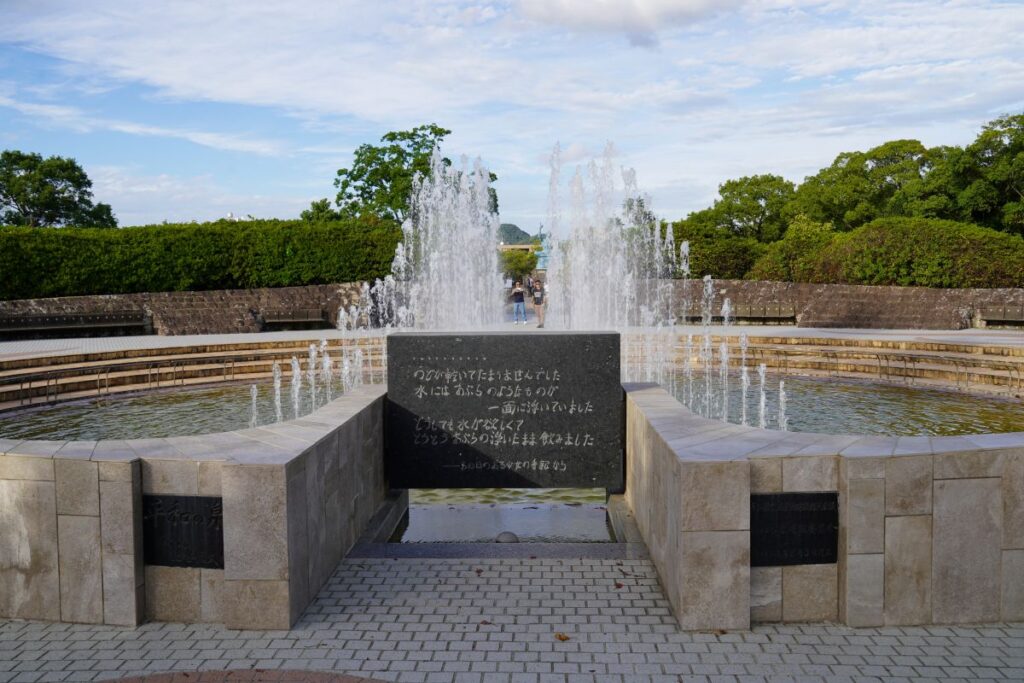
In Prayer Zone
Atomic Bomb Drop Point Monument is established. The atomic bomb exploded approximate 500 meters above ground and dropped here. The heat of 3000 degrees burned everything to ashes. The layers of tiles and bricks from houses destroyed by the atomic bomb, as well as glass melted by the heat, still remain.
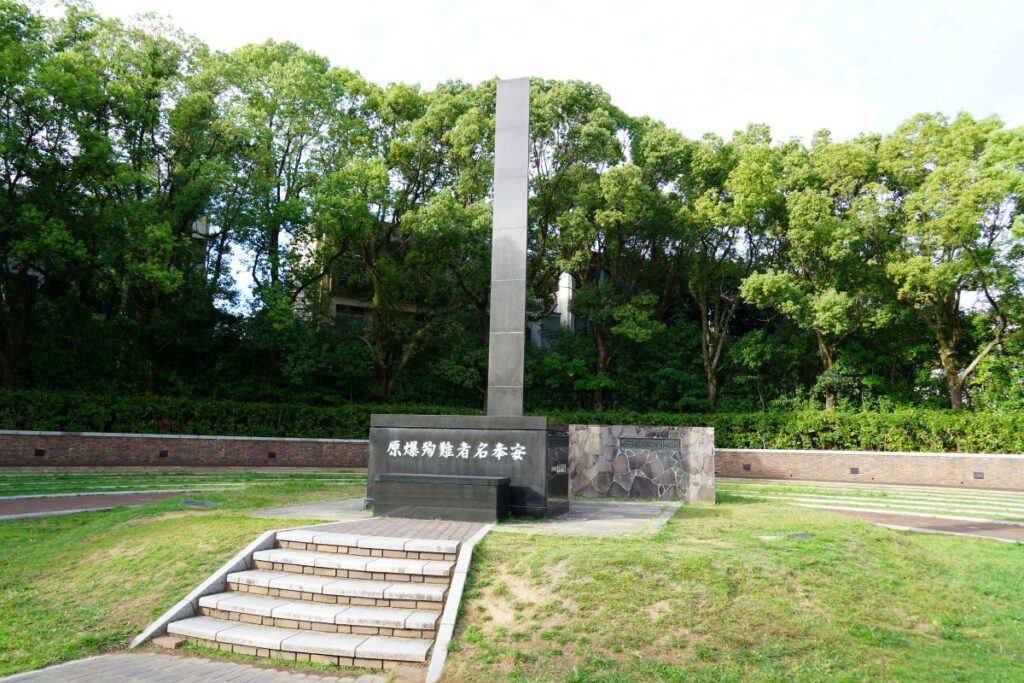
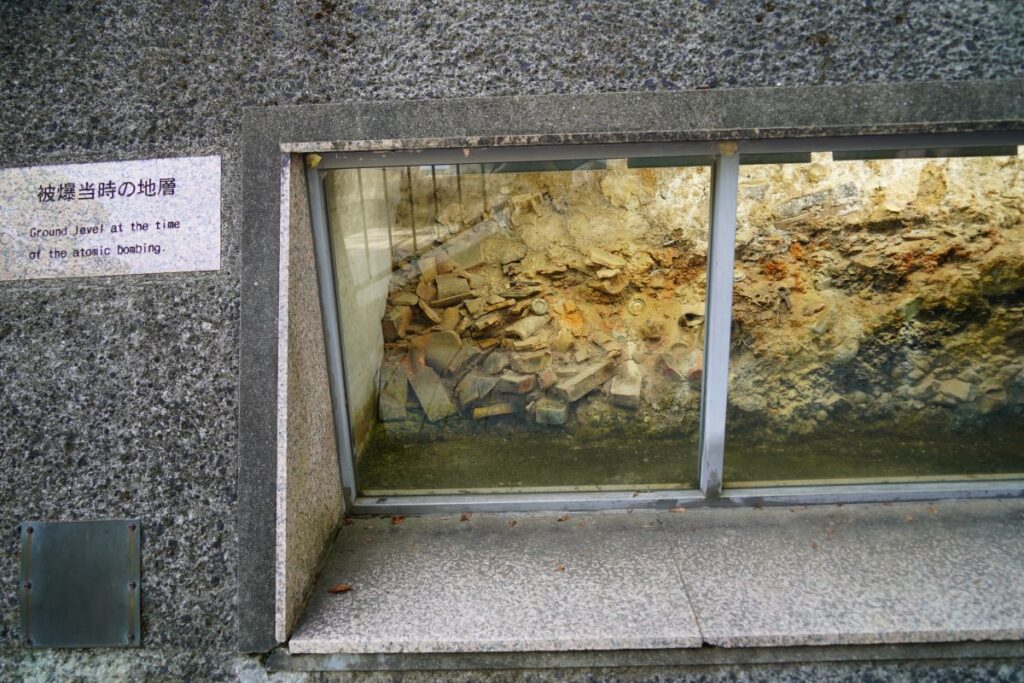
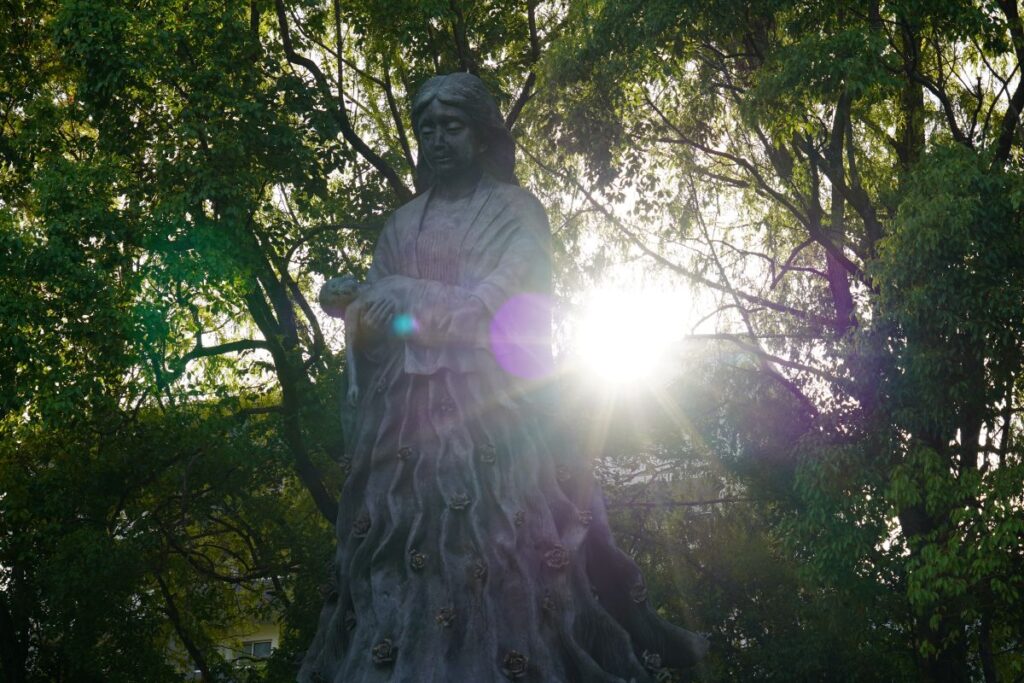
After the atomic bomb was dropped, Matsuyama Town where is the epicenter, has turned into a hell of scorching heat, and Shimonokawa-river flowing through this town was filled with an overwhelming number of corpses of those who had sought water and reached the riverbank, only to succumb and perish.
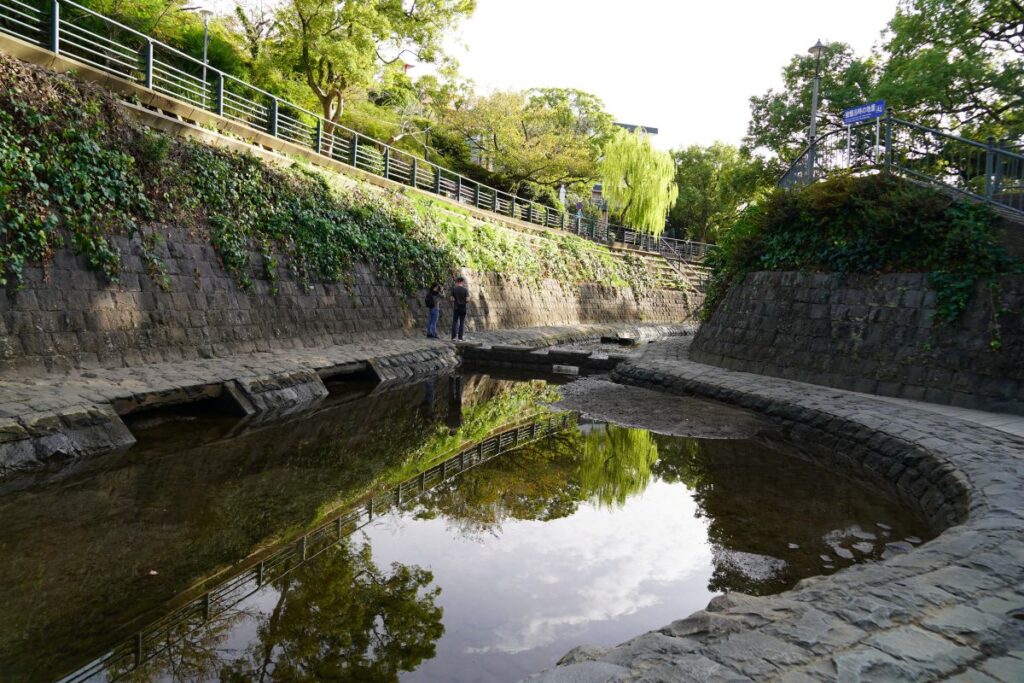

Shimonokawa-river
In Zone of Learning
there is Nagasaki Atomic Bomb Musuem. Inside the facility, there are displays of the circumstances of the atomic bombing, the reality of the damage by the atomic bombing such as artifacts burned and scorched, testimonies from survivors, and the development history of atomic bombs. Elementary, middle and high school students 100 yen, other 200 yen. Groups of 15 or more people will get a discount.
Cafe
Blue Bronze Store & cafe is open in 2023 spring near Nagasaki Peace Park. They are selling miscellaneous goods, clothes, baked confectioneries. In the cafe, we can order food and drink such as local green tea, coffee, homemade curry, especially their craft coke is very popular. Frozen cubes of coke are served with ginger, spices, frozen fruits in a glass, we add sparkling water to it when drinking. It is unforgettable tasty drink.
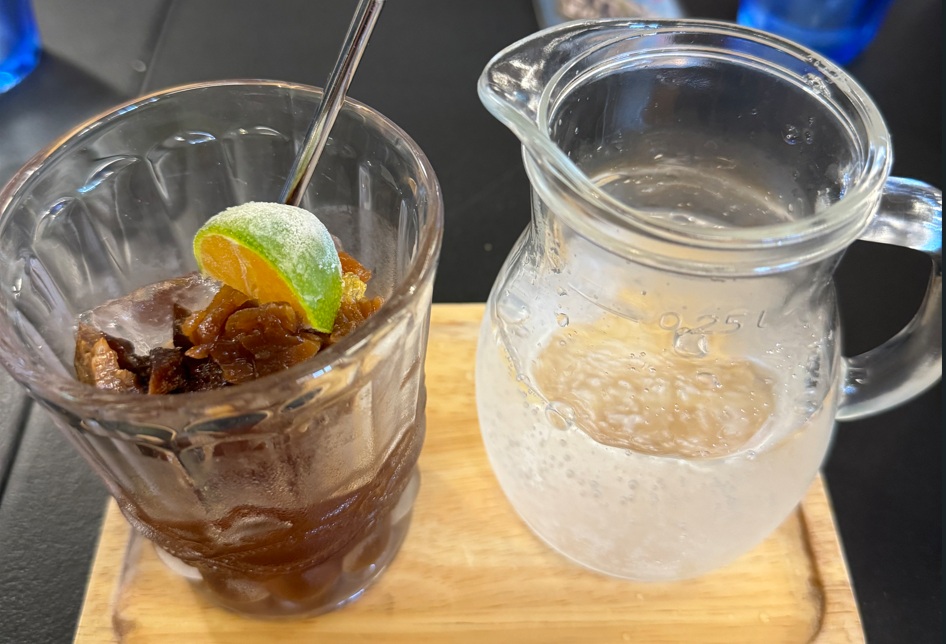
Site of the Tang people’s residence
In Edo period, the Chinese residence area (Site of the Tang people’s residence) was established in Nagasaki for Chinese residents as a policy of isolation to prevent smuggling. Chinese residents were strictly restricted from traveling in and out, and only courtesans could freely come and go to that place. However, traditional events could be freely held within the mansion, and banquets were held almost every day.
Many samurai and scholars from across the country visited the Tang people’s residence to learn about Chinese poetry, painting, calligraphy, and other arts. In fact, more people visited the Tang people’s residence than Dejima. Also, trade with China exceeded Dutch trade in both volume and profit.
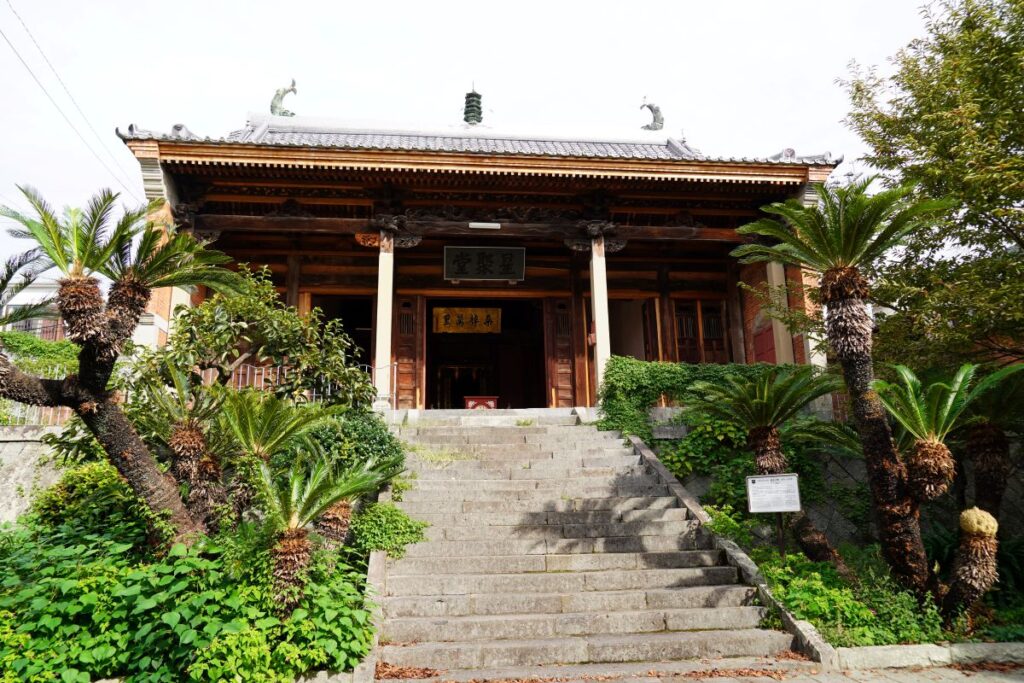

Fujian Hall ( left ) and Tin Hau temple (right) were built to worship the Holy Mother. The current building was constructed in 1906 (the 39th year of the Meiji era) with donations from overseas Chinese.

Sun Yat-sen, known as the father of the Chinese revolution, visited Nagasaki nine times, and this statue of Sun Yat-sen was donated to Nagasaki Prefecture from Shanghai in 2001 as a symbol of Japan-China friendship.
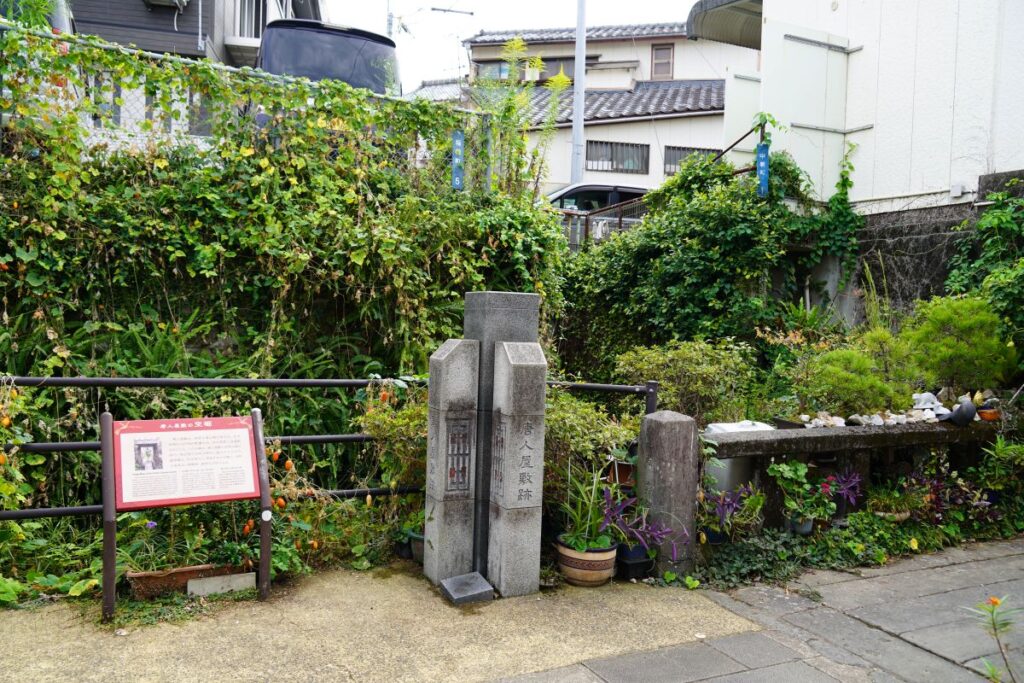
The Chinese residence was surrounded by a moat and walls, with bamboo fences arranged on the outside, isolating it from the outside world.
China town ( Nagasaki Shinchi Chuka Gai ) is close to Site of the Tang people’s residence. As a specialty in the China town in Nagasaki, “Nagasaki Champon” should be listed. Stir-fry pork, vegetables such as green onions, fish products like fish cakes, and a dozen kinds of ingredients in lard, then add specialized noodles to a broth made from pork bones and chicken carcasses and bring to a boil. We had nice Nagasaki Champon at Shokuenbou open since 2023.
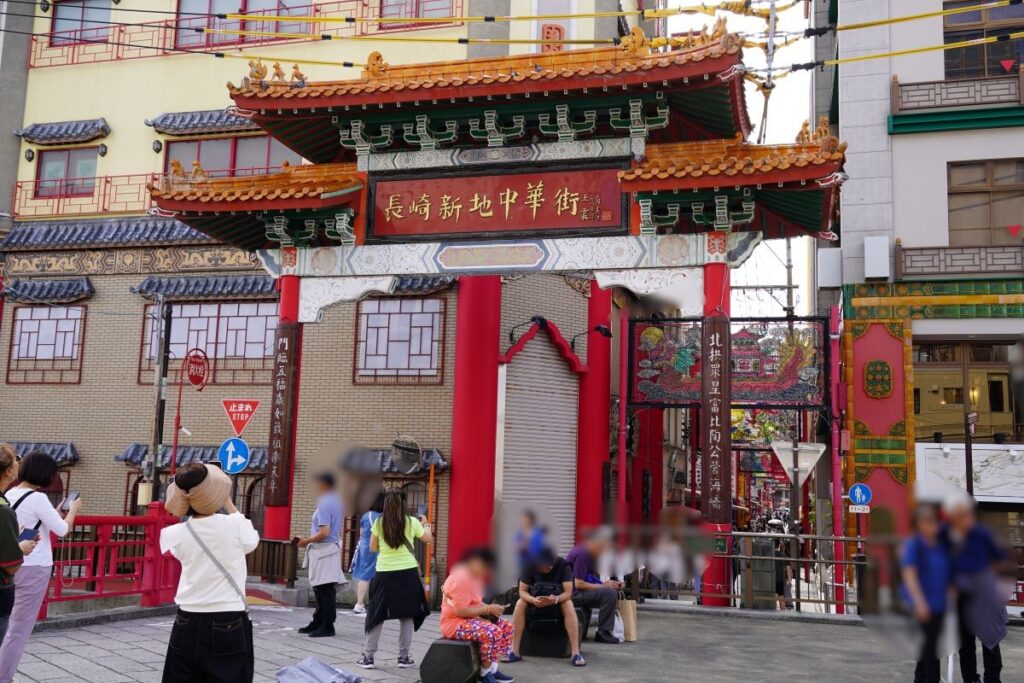
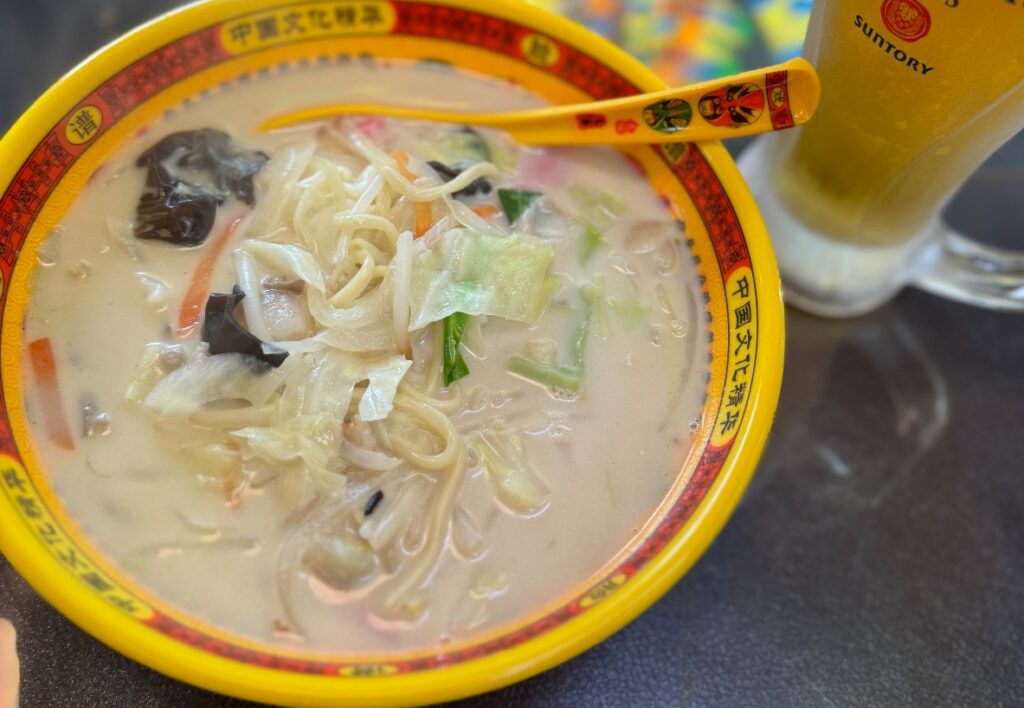
Dejima
Dejima was a tiny island in the shape of fan built in 1636 to have Westerners (firstly Portuguese, later Dutchess) live and prevent the propagation of Christianity. Edo Shogunate built walls, a bridge, let wealthy merchants in Nagasaki build houses and warehouses for rent. Dejima was the only place in Japan where Westerners could visit for trading for 200 years until Edo Shogunate ended.
The perimeter of the fan-shaped island was reclaimed due to port construction and other works after the country opened up, and by 1904 it became completely connected to the mainland, causing the fan shape to disappear.
Currently, 19 houses and warehouses are restored by Dejima Restoration Project. It is open 8:00 – 21:00 ( last entry 20:40 ), adult 520 yen, high school students 200 yen, others 100 yen. Group more than 15 people can get a discount. Accessible by bus ( No.17 or 27 and get off at Dejima bus stop ), tram( To Sohukuji and get off at Dejima ) from JR Nagasaki station. Also, it takes 20 minutes on foot from JR Nagasaki station.

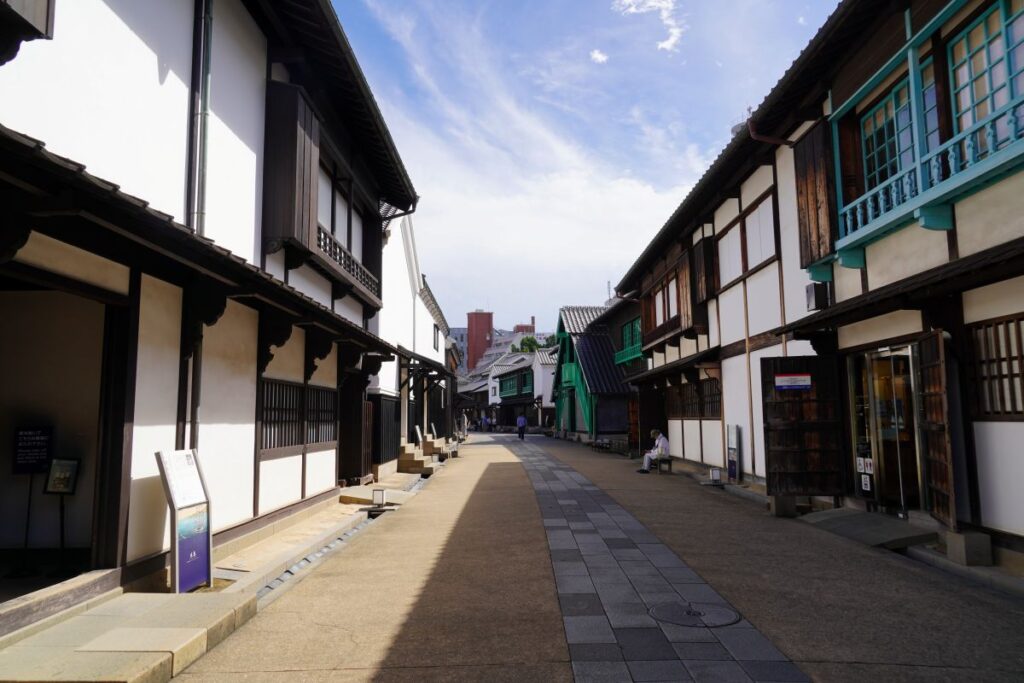
When you visit here, you can feel as if you have time-traveled back to the Edo period.
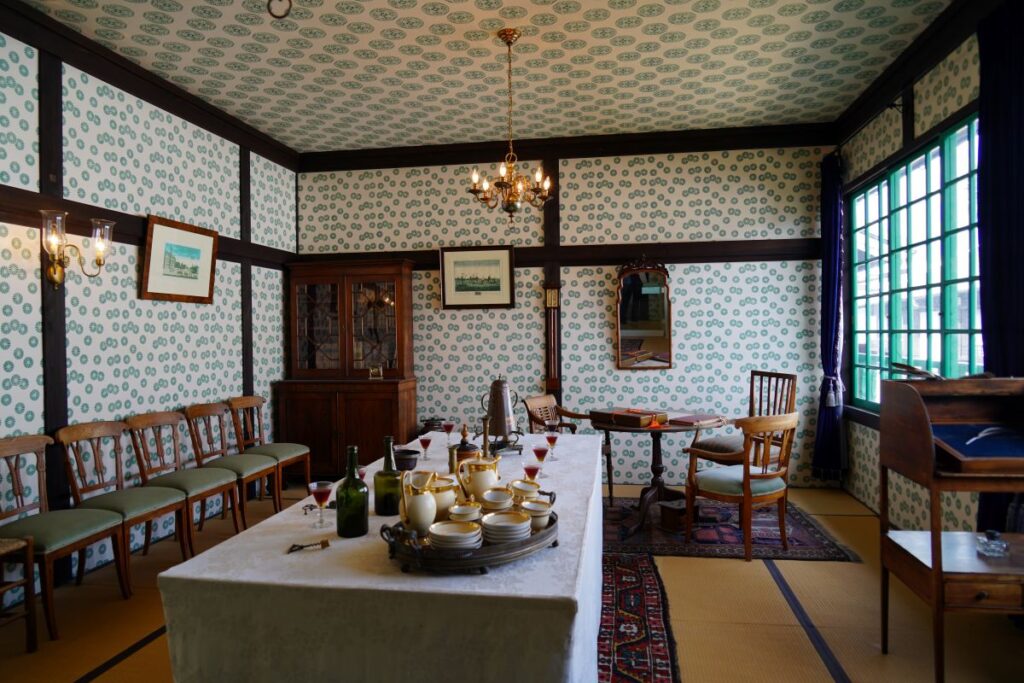


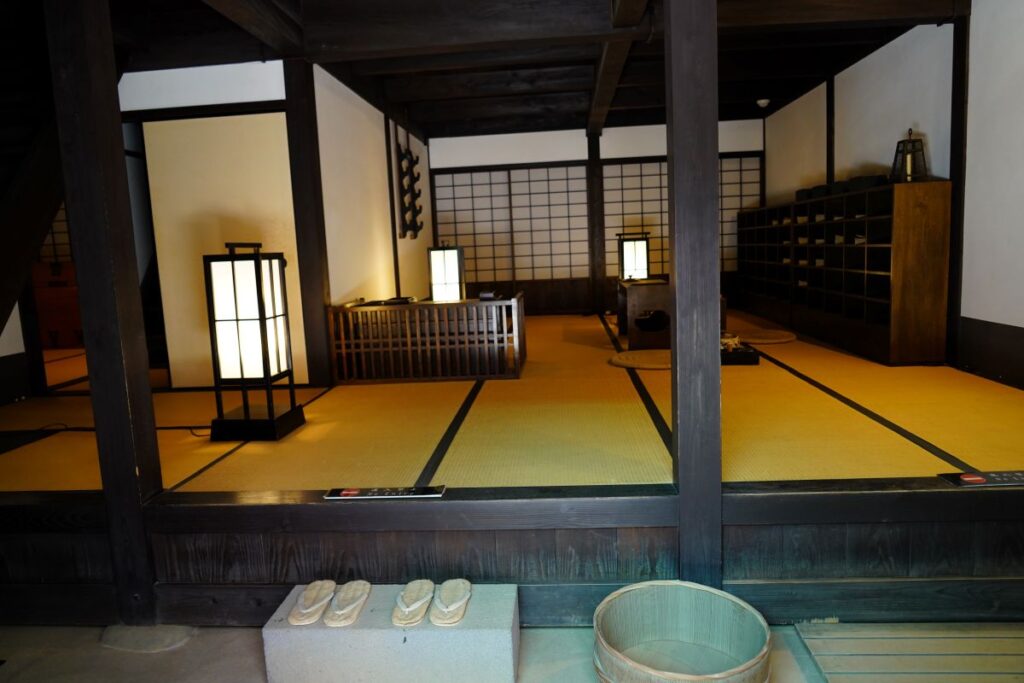
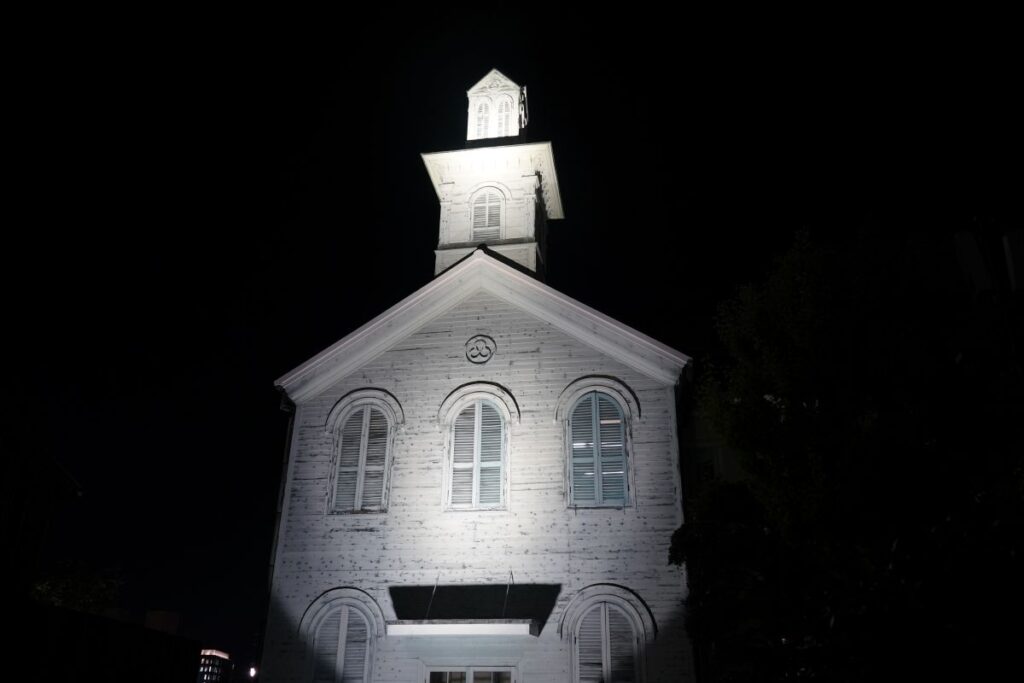
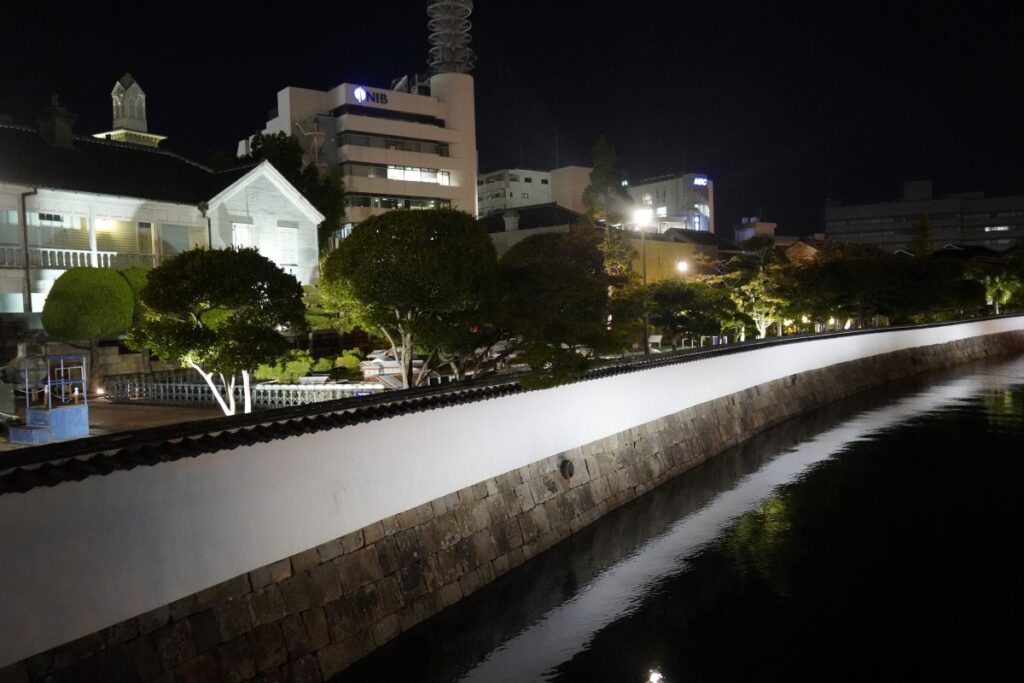
Glover Garden
Thomas Blake Glover (1838-1911) is Scottish, established Glover and Co. (Glover Shokai) in 1859 in Nagasaki after the Edo Shogunate concluded Japan-U.S. Friendship Treaty with the USA and decided to open the country in 1853. He was active as a weapons dealer and built a Western-style dock in Nagasaki to start the shipbuilding industry. In Meiji period, he managed the coal mine in Takashima. He influenced Japan a lot for the modernization. Also, he established Japan Brewery Company with Wilson Walker who is English, old brother of Robert Neill Walker ( Walker and Co. – produced first Japanese soft drink ). It is first beer brewery in Japan, the predecessor of Kirin Brewery Company, Limited. His residence was built on a scenic place on the hilltop in Nagasaki city.
Walker brothers, William Alt ( Alt and Co. – Japanese tea trading ), Frederic Ringer ( English, Home Ringer and Co. – hotel business, trading, Japanese tea production ), Thomas Albert Glober/Tomisaburo Kuraba ( son of Thomas Blake Glover, installed steam troll fishing in Japan, published fish atlas ) also lived in the residential area.
Now it is open for public as Glover Garden. Adults 620 yen, High school students 310 yen, Elementary and junior high school students 180 yen. Open everyday, Opening hours 8:00 – 18:00 / 20:00 / 21:30 ( closing time is changeable please check here ). Access No.30,40 bus from JR Nagasaki station south exit, get off at Glover Garden( approx. 20 minutes ), more options are here.

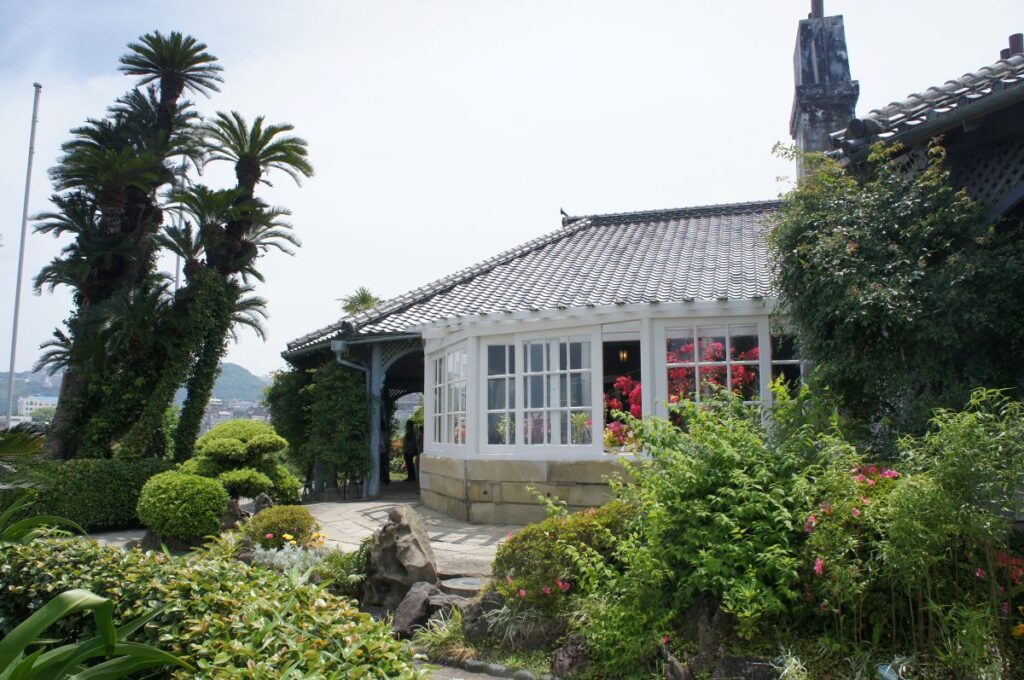
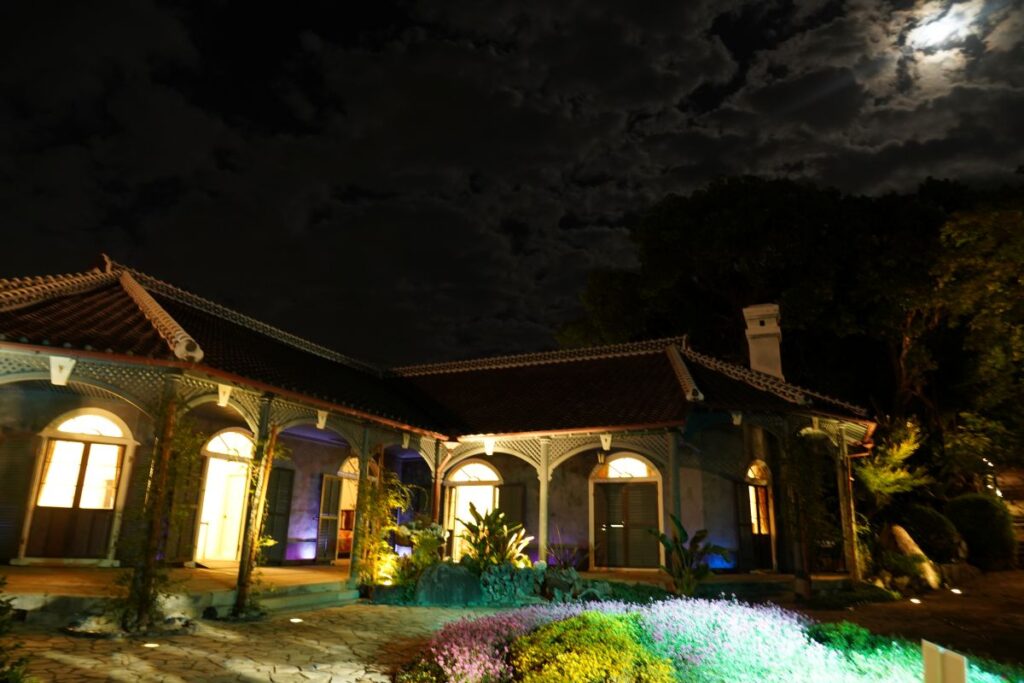
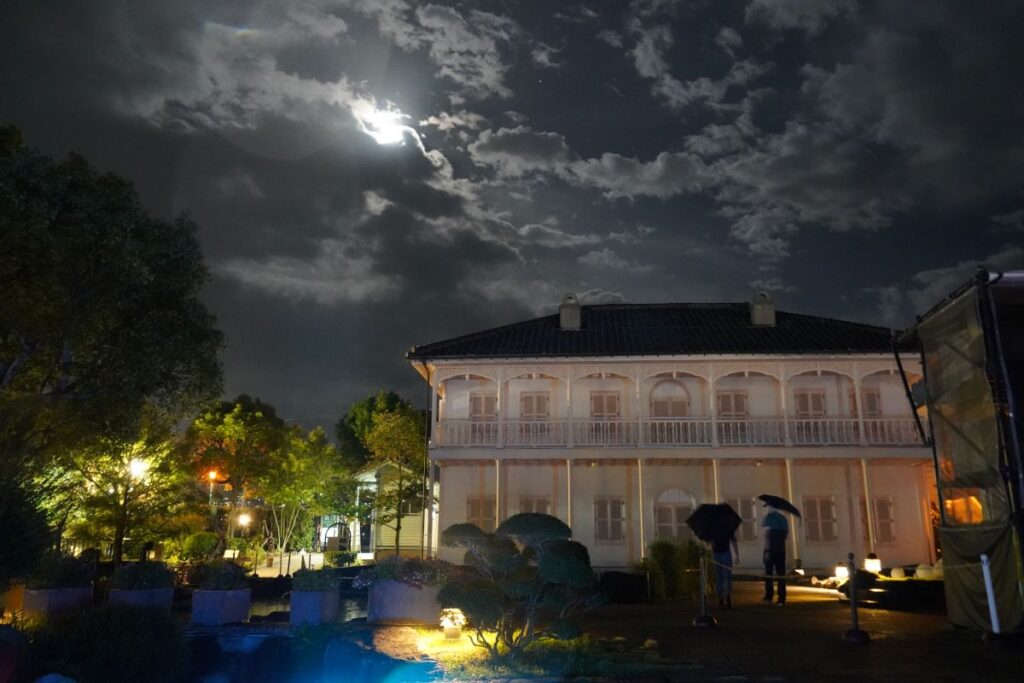
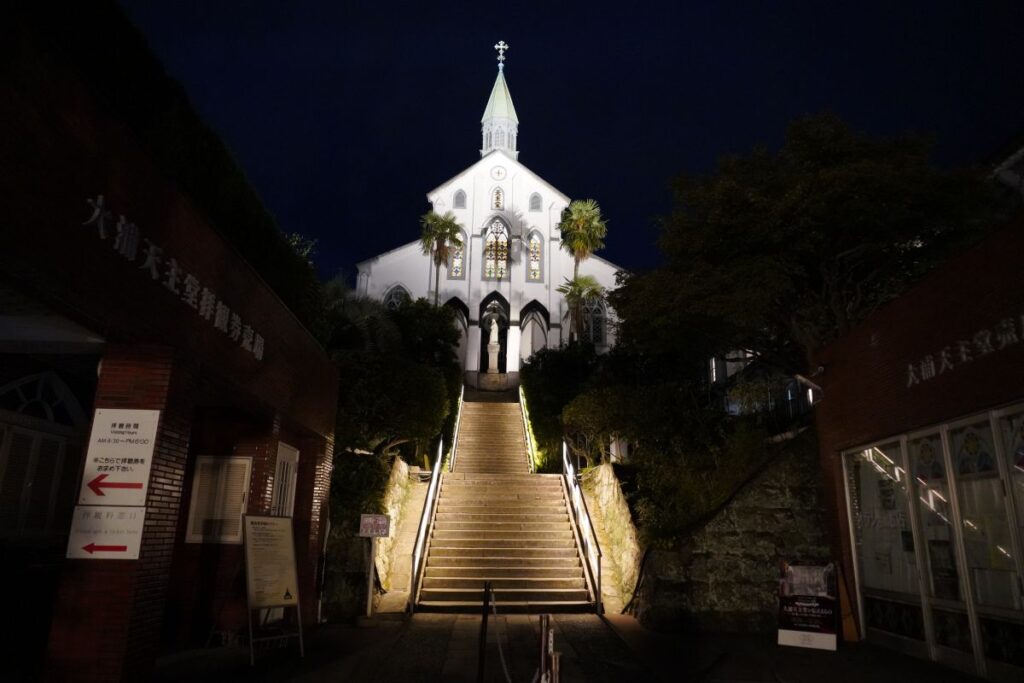
Fukue island ( a part of Goto islands )
Fukue island is a part of Goto islands in Nagasaki prefecture. Goto means five islands of Nakatsu island, Wakamatsu island, Naru island, Hisaka island and Fukue island. Hisaka island, Naru island and Fukue island are Goto city. In Goto islands, there are 152 islands including small uninhabited island, Catholic Churches have been registered to the World Heritage Site as Hidden Christian Sites in the Nagasaki Region. (Christianity has often been prohibited in the history of Japan.) Also, almost the entire area is designated as a national park for complex and diverse terrain such as volcanic landscapes.
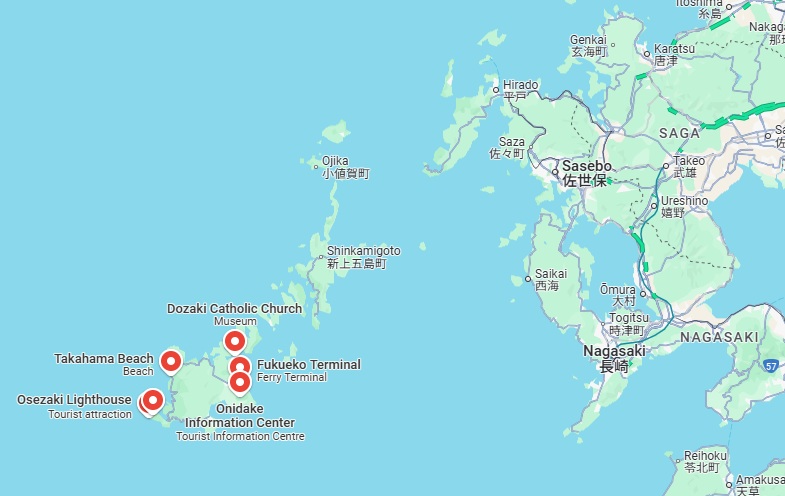
To Fukue island, it takes approx. 1.5 hour by jetfoil (Kyushu Shosen : Adult 9,030 yen, Child 4,080 yen as of 2025 ) from Nagasaki port. Airplane from Nagasaki airport to Goto Tsubaki airport in Fukue island is also available. In Fukue island, hiring a car or taxi are recommended. We took the jetfoil to Fukue island and hired a car (Goto-ya rental car)to go around. Goto-ya rental car has the pick-up service.
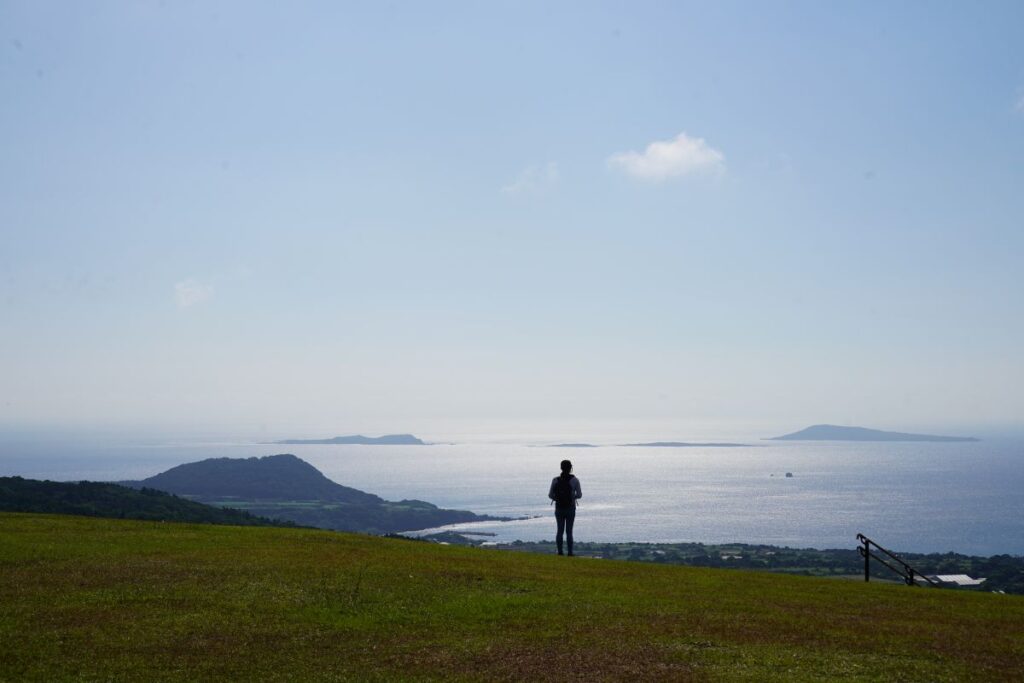
Mt.Oni nature garden ( Oni-dake enchi ) is located 6km away from Fukue port, takes approx. 12 minutes by car. There is no tree, but only short grasses and plants. It is a part of the Kyusyu Nature Trail 3,000km footpath.

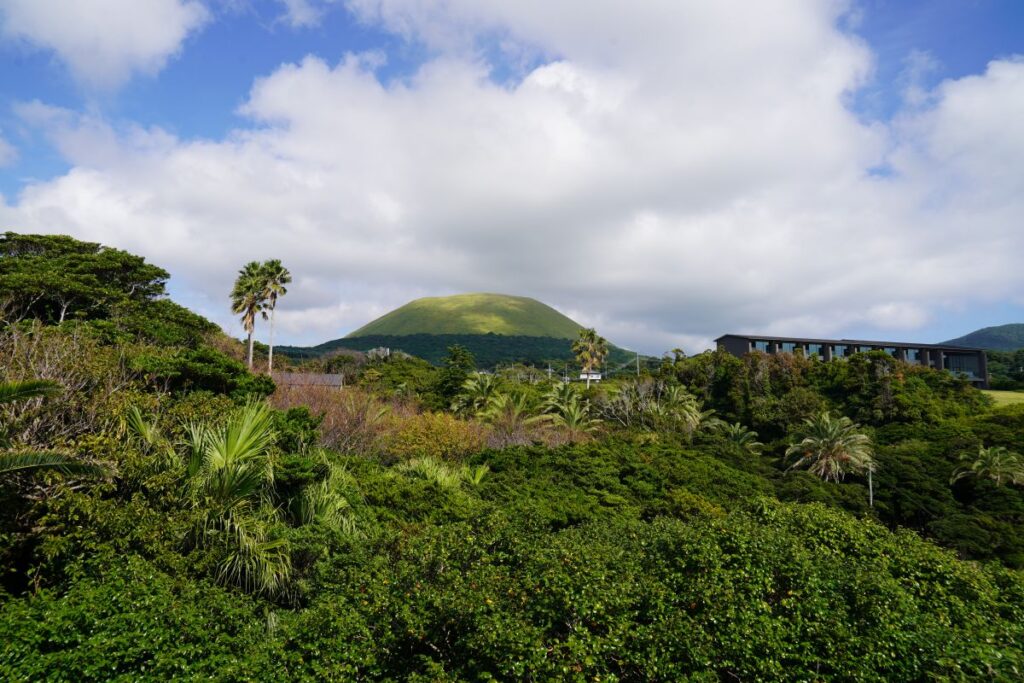
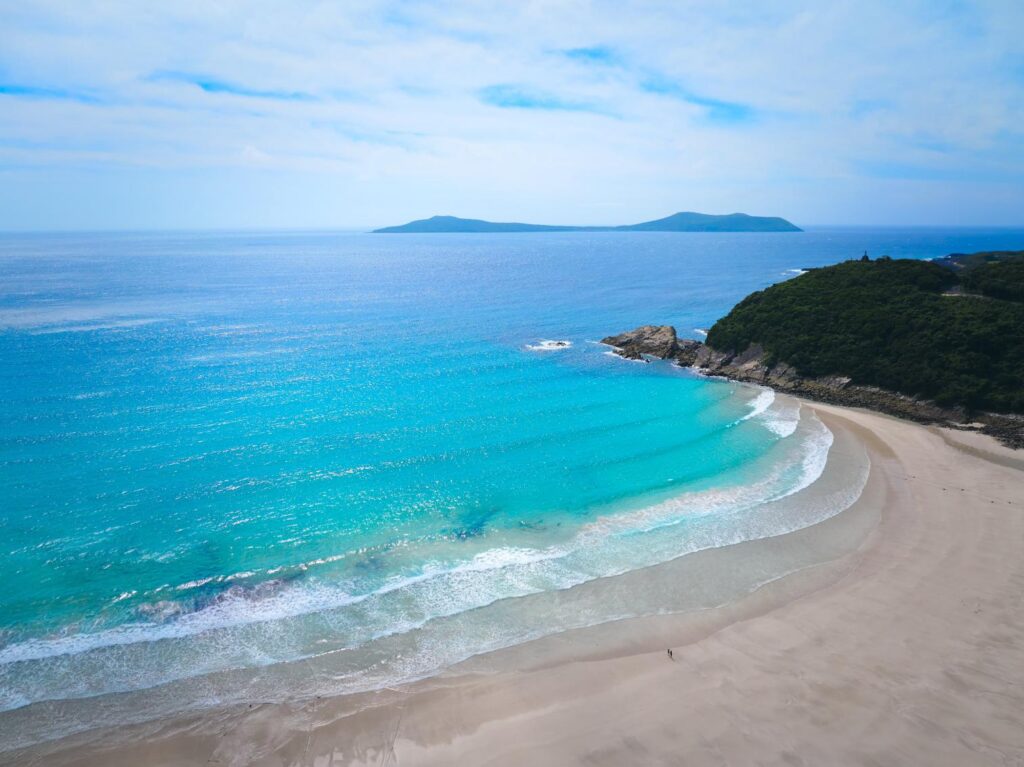
Takahama beach in Fukue island can be considered as the most beautiful beach in Japan with vivid emerald green color. 27km away from Fukue Port, takes approx. 35 minutes by car.
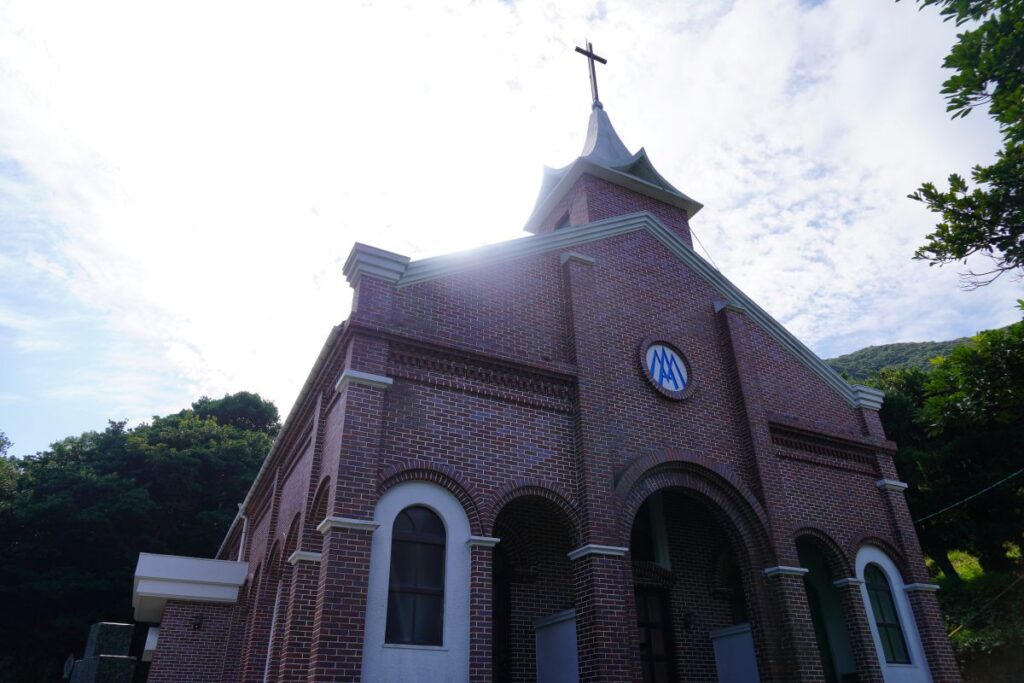
The Imochiura Church’s history of faith began with the hidden Christians who moved to Goto in the late Edo period, and this area is the only area in Goto that escaped persecution. The first brick church was built in 1897. Later, the church was destroyed by a typhoon, current concrete church was built in 1988. 32km away from Fukue Port, takes approx. 45 minutes by car.
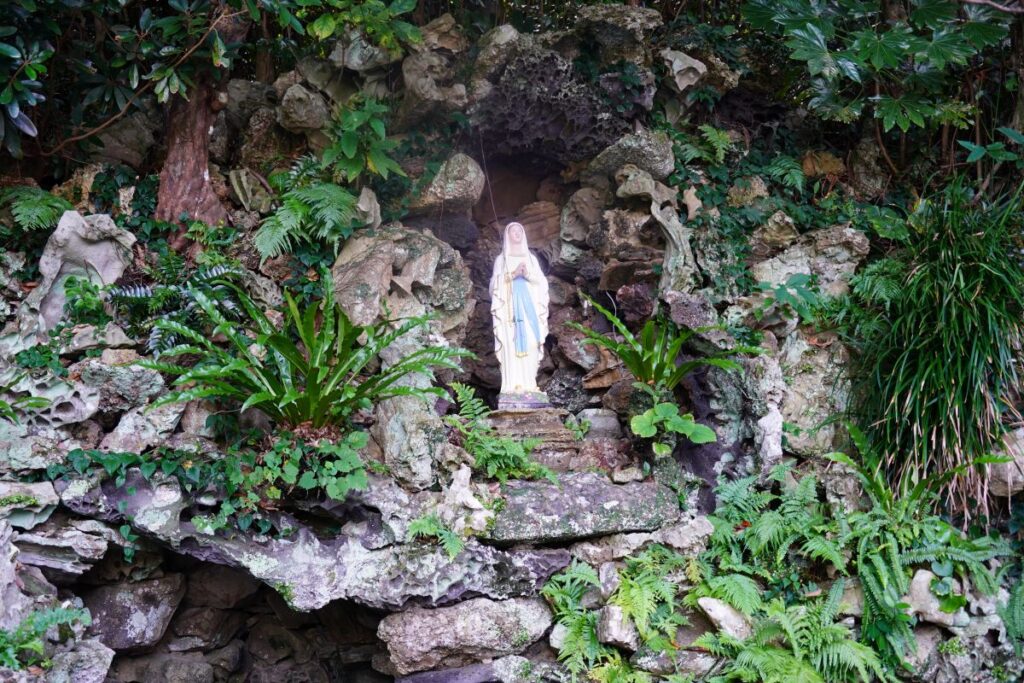
In 1899, Father Peru, the Bishop of the Goto Islands and Christians in Goto islands collected strange rocks in the island and built first Lourde in Japan. Although the water in the Lourde is currently dried up, it is said that drinking this sacred water cures illnesses, making it a pilgrimage site for believers from all over Japan. ( sacred water is being provided in a separate building )
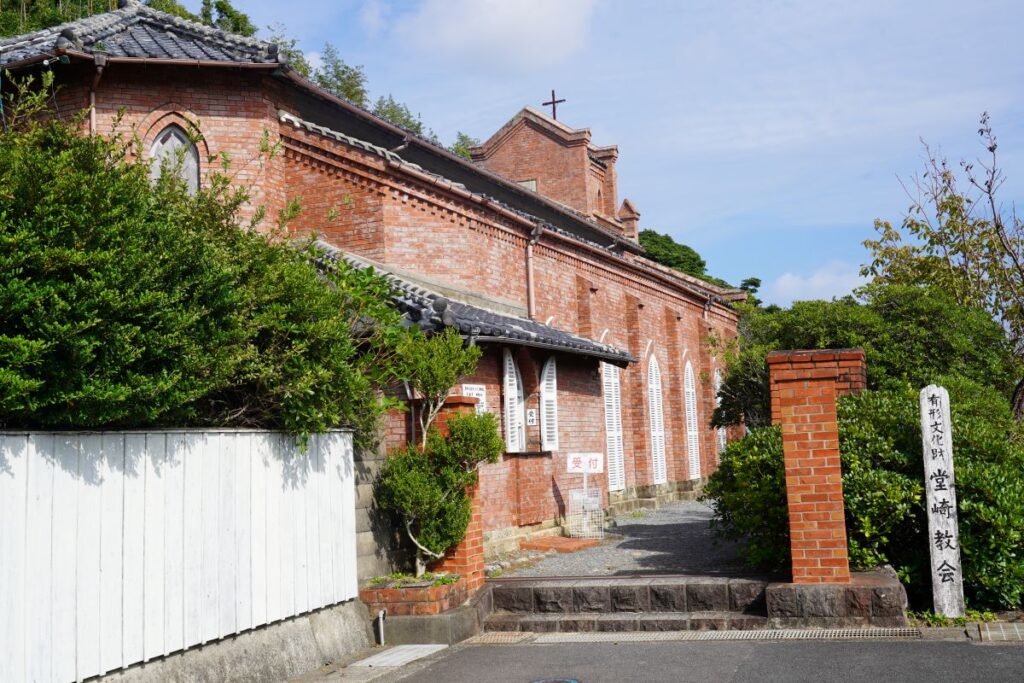
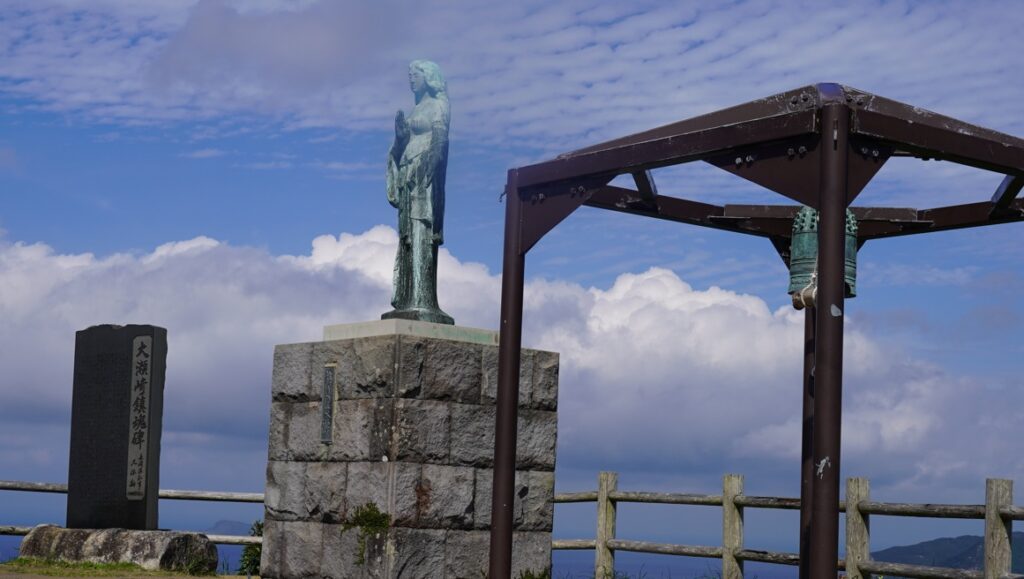
In Osezaki, near by the observation deck of Osezaki Lighthouse, there are Mayden of Prayer statue and Bell of Prayer. These were established to comfort the spirits of many soldiers who, during the Pacific War, departed from the shore of Osezaki where was their last view in Japan and could not come back again. Mayden of Prayer was created by Seibo Kitamura who also created Peace Statue in Nagasaki Peace Park.
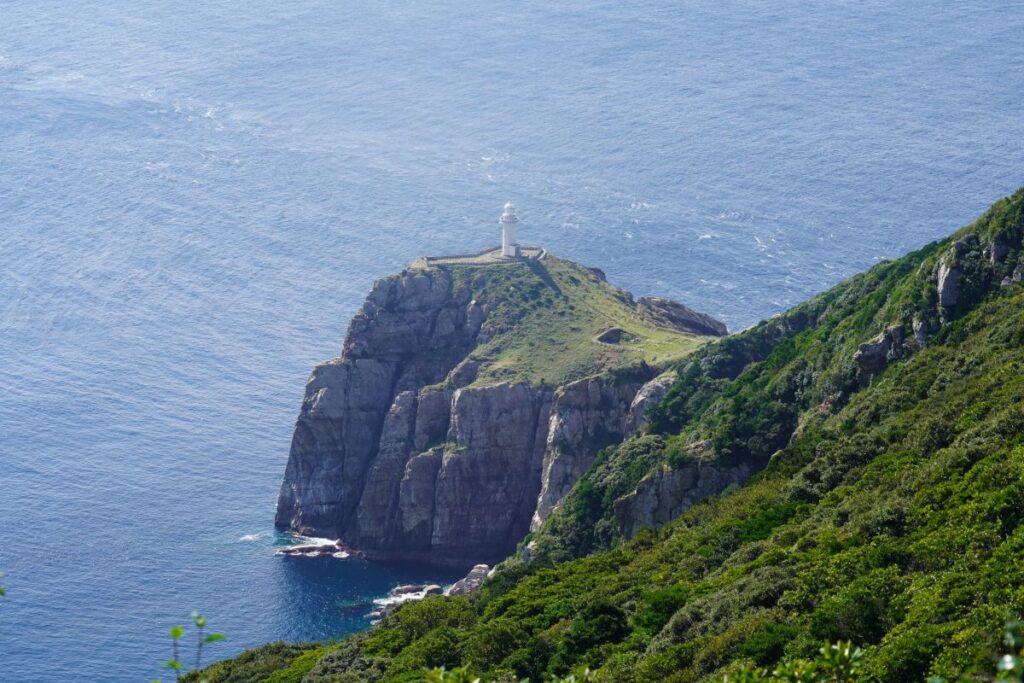
Osezaki lighthouse is the place where the sunset occurs the latest on the Kyushu mainland. This photo was taken from the observation deck. There is a footpath we can walk to the lighthouse. It takes approx.1 hour for a return.
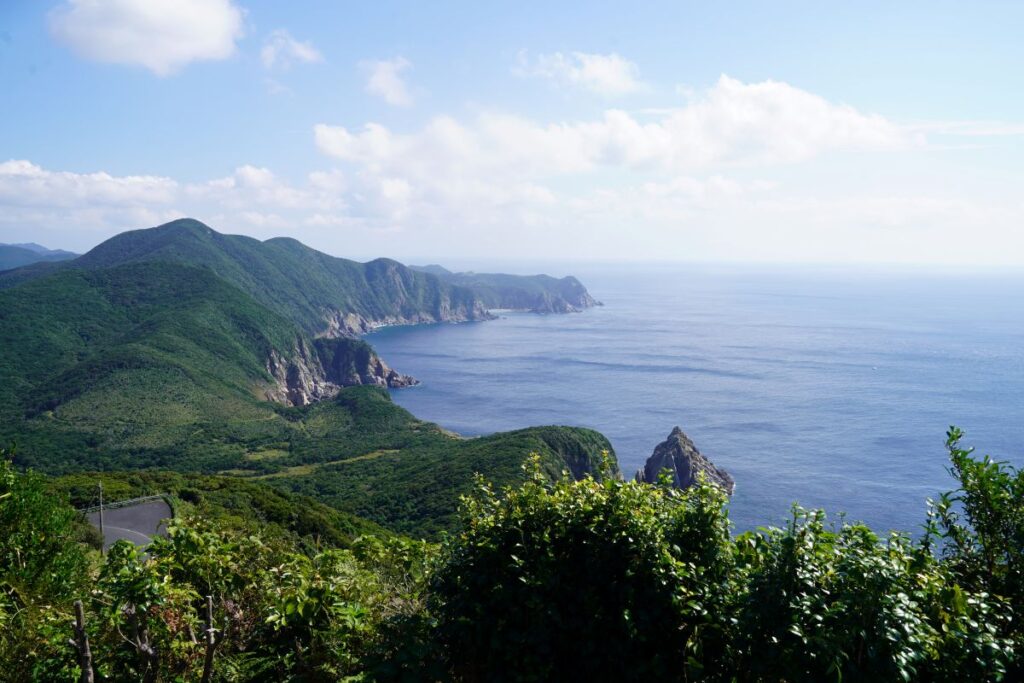
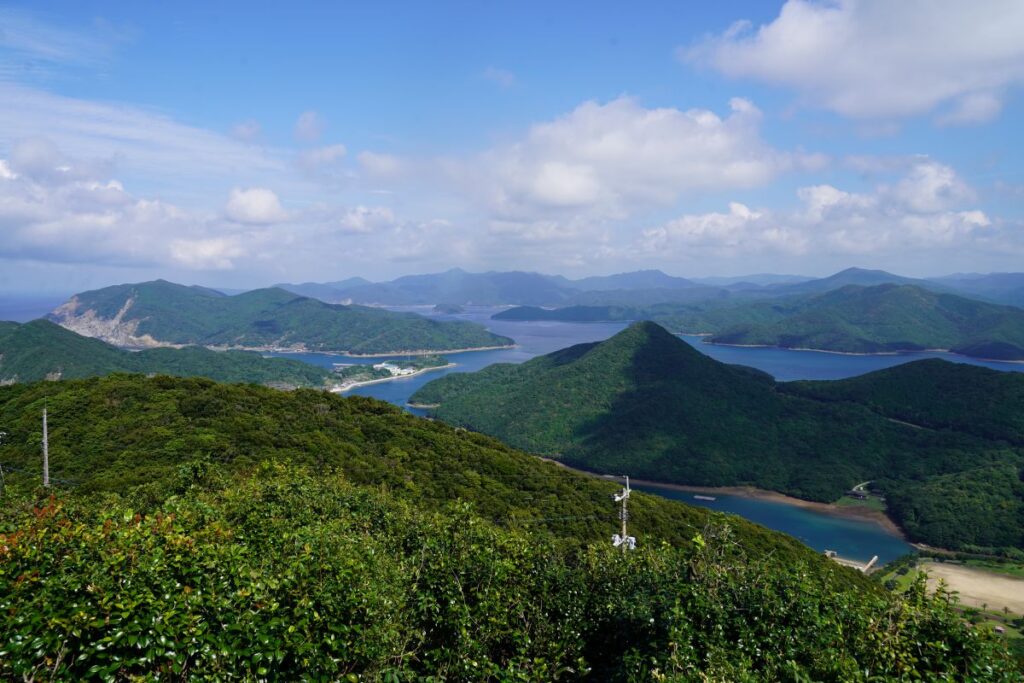
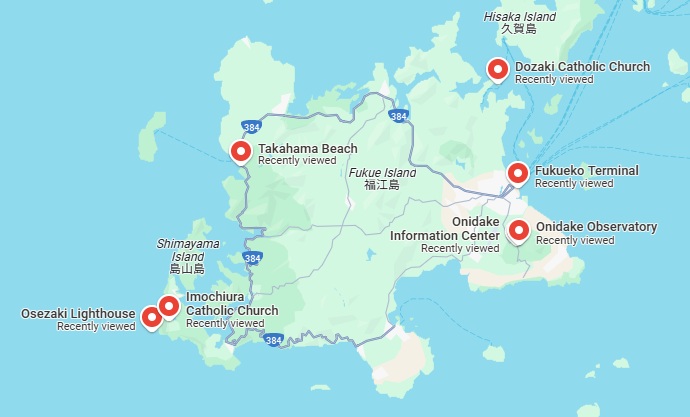
Nagasaki city night view and Megane Bridge
The following bridge is called The Megane Bashi( Eyeglass Bridge ), the part of the bridge’s arch reflected on the river surface looks like a pair of glasses. It is located near Dejima. The Megane Bridge is the first arch-type bridge in Japan, built in 1634 by the Zen master Mokushi Jojo from Kofuku-ji Temple.
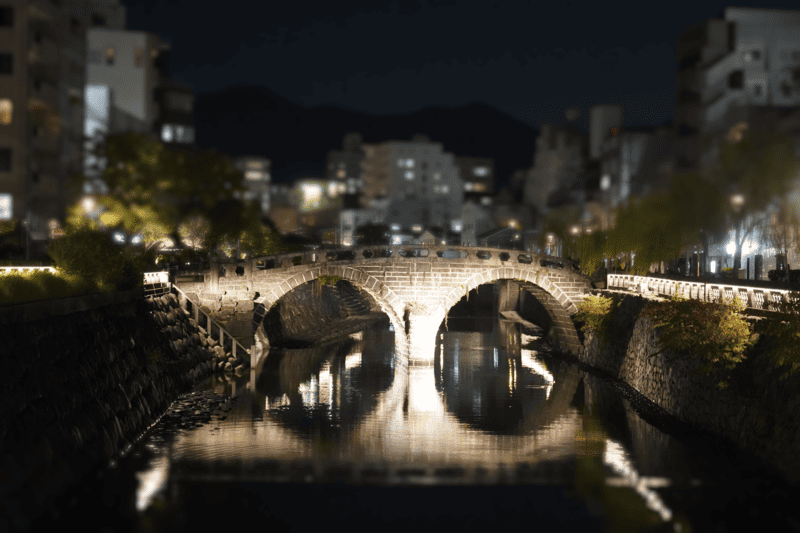
The night view from Inasa Mountain is one of Japan’s three great night views. We can go to the top of Inasa Mountain from Fuchi shrine station by Nagasaki Ropeway. Round trip – adult 1250 yen, children 940 yen, infant 620 yen ( as of 2025 June )
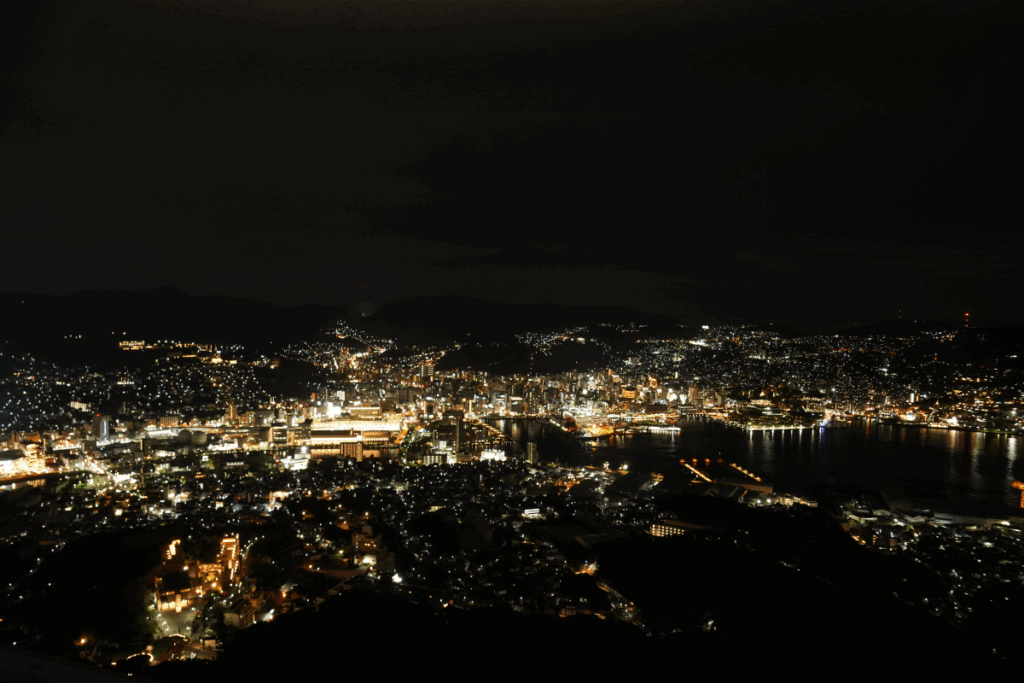
Nagasaki Specialty
Shochu
Shochu is distilled spirit made from grains such as potato, mainly produced in the Kyusyu region. Especially in Nagasaki, Iki Shochu produced in Iki island is made from barley, known as Mugi (barley) Shochu. Generally, alcohol content is 25%, some times 35-40%. There are several ways to drink shochu: straight, on the rocks, with water, or with hot water, Mugi Shochu has the unique roasted flavor of barley is characteristic. The photo below shows Ching produced by Omoya Shuzo in Iki Island, Goto-nada Beni Satsuma produced by Goto-nada Shuzo, this is made from potato in Nakatsu Island where is a part of Goto Islands.
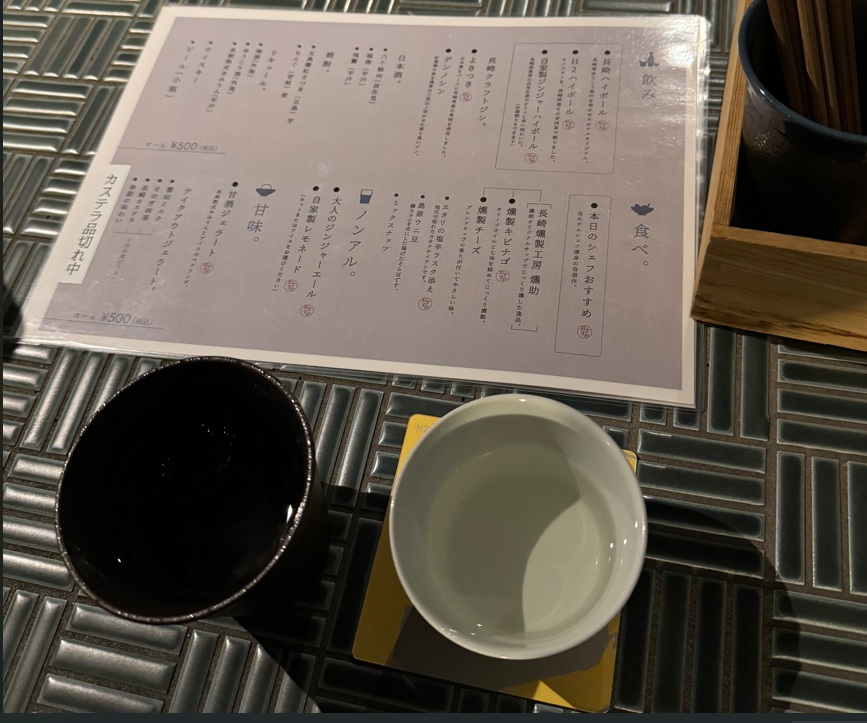
Sake
Even though shouchu is a major alcohol product, sake brewing is also thriving in Nagasaki. Omoya Shuzo in Iki Island is brewing a very popular sake ‘Yokoyama’ further to shochu (above Chingu).
Goto Udon
Goto udon is considered one of the “three great udon noodles of Japan,” along with Sanuki udon ( Kagawa prefecture in Shikoku region ) and Inaniwa udon ( Akita prefecture in Tohoku region ). Goto udon is thinner than other udon noodles, but because it is kneaded with camellia oil, it has a unique chewy texture. The broth for Goto udon soup is often made from grilled flying fish (ago) caught in the waters off Goto.

